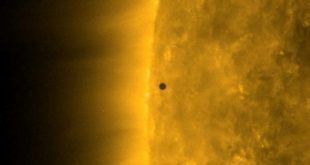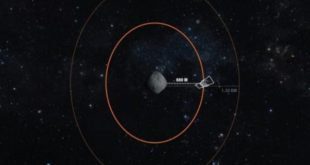 Scientists were able to detect the galaxy in which the relative proportion of oxygen only ten times smaller than the Sun.
Scientists were able to detect the galaxy in which the relative proportion of oxygen only ten times smaller than the Sun.
Astrophysics from Japan, Sweden, the UK and Germany looked into the Dark ages of the Universe. Scientists were able to detect the galaxy in which the relative proportion of oxygen only ten times smaller than the Sun. A study published in the journal Science.
Galaxy SXDF-NB1006-2 is located at a distance of 13.1 billion light years from Earth. It was first discovered in 2012 using the Japanese Subaru telescope, and then in June of 2015 investigated in detail by the Observatory ALMA (Atacama Large Millimeter Array).
If the first Observatory has detected emission from hydrogen, the second investigated the radiation from dust particles and ionized oxygen. Thus scientists have discovered the most distant galaxy that contains oxygen, and showed that in such systems there is almost no dust.
The lack of dust and carbon is important for the ability of radiation to penetrate into the galaxy and ionize it matter. No dust scientists explain the possible explosion of a supernova or absence of cold dense clouds in the interstellar medium.
In the period of development of the Universe, called the Dark ages and lasted 0,38—550 million years after the Big Bang, the world was filled with hydrogen, helium and lithium, radiation from them, and the relic glow. The stars and planets in this period was absent.
Heavier elements (carbon and oxygen) were accumulated much later. In place of Dark ages came the age of reionizatsii, when they began to form the first stars and their clusters, the radiation from which ionized hydrogen. The work allowed the researchers to trace this period of evolution of the Universe.






